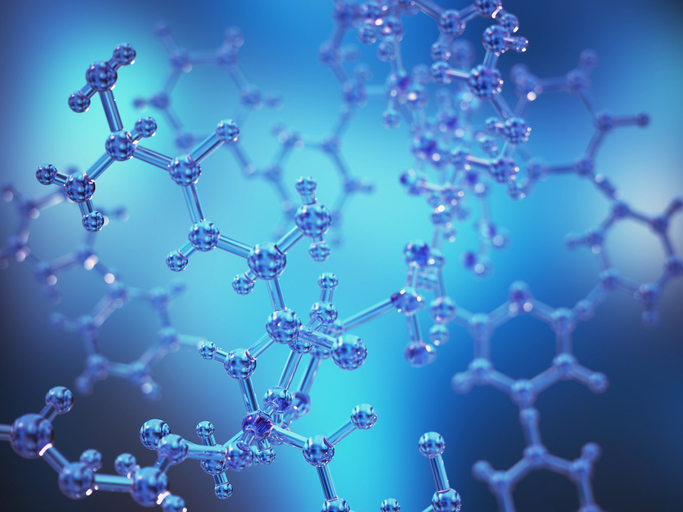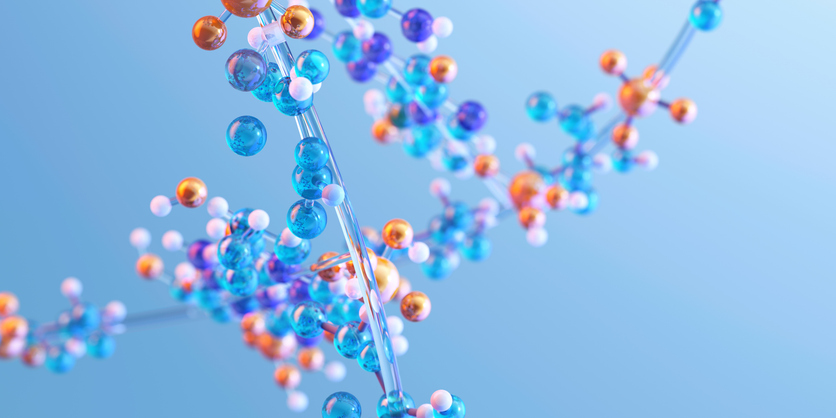
Peptides are cornerstones of modern biochemistry, shaping everything from fundamental cellular mechanisms to cutting-edge drug design. Scientists and developers routinely harness these versatile molecules to improve therapeutic outcomes, investigate disease pathways, and optimize industrial processes.
At Adesis, our expertise in peptide synthesis has given us a unique perspective on just how transformative these biomolecules can be. Now, we will explore the myriad ways peptides function in health and disease while discussing the techniques researchers use to produce them at scale. We’ll also cover the challenges you might face in harnessing their power and outline the boundless opportunities they present. Finally, we’ll share how our team is poised to support your endeavors at the conclusion of this guide.
From Short Chains to Extended Structures
Peptides are amino acids linked by peptide bonds, but differ largely in their lengths and potential complexities. Generally, peptides consist of fewer than 50 amino acids, while full proteins can stretch far beyond that range. This variation in chain length results in profound differences in structural folding, stability, and biological roles.
As molecules get larger, there is a shift from simple linear arrangements to intricate three-dimensional configurations. Once peptide chains fold correctly, they may become fully functional proteins, performing specialized tasks like enzyme catalysis, cell signaling, or immune defense. In contrast, many peptides maintain a more streamlined structure that allows them to act quickly, binding specific targets with high affinity but sometimes lacking the robustness of a larger protein.
The Significance of Structural Complexity
Larger peptides often fold into secondary and tertiary structures, forming stable domains that may interact with other proteins or cellular components. These folds can protect certain regions from proteolytic enzymes, offering enhanced stability relative to smaller peptides. On the other hand, short peptides, precisely because of their more flexible structures, can be highly selective in targeting specific receptors, making them useful in scenarios where immediate binding and quick clearance are desired. Ultimately, the structural nuances of peptides directly influence their durability, function, and suitability for various biomedical or industrial applications.
Defining Roles in Health and Disease
Peptides are integral to life’s orchestration. They regulate metabolism, signal crucial changes in the body, and can even protect organisms from external threats. In disease contexts, disruptions in peptide production often underlie or exacerbate pathologies.
Peptides such as neurotransmitters modulate neuronal communication, influencing learning, memory, and mood. Larger chains may carry enzymatic functions that catalyze reactions necessary for everything from energy production to detoxification. Because peptides exhibit remarkable specificity, researchers often see them as prime targets or tools for developing new therapies.
Key Biological Functions
Peptides play a key role in numerous biological functions. A few prominent examples include:
- Hormonal Regulation: Many hormones exist as peptides, managing and regulating the body’s diverse processes.
- Immune Responses: Antibodies are specialized peptide chains, and smaller antimicrobial peptides can disrupt bacterial cell membranes, serving as natural defense agents.
- Cell Signaling: Growth factors and cytokines are often peptide chains that direct cell proliferation, differentiation, and movement during development or in response to injury.
When these molecules go awry, diseases can manifest. Researching these malfunctions has led to breakthroughs in how we diagnose and treat conditions, illustrating the pivotal importance of studying peptides in both healthy and diseased states.
Potential Targets in Drug Discovery
Peptides provide extraordinary precision in interacting with receptors, enzymes, and other proteins. This specificity is a double-edged sword. On one hand, it allows for the design of drugs with fewer off-target effects; on the other, it means that each peptide-based treatment must be carefully tailored to its molecular target. Modern drug discovery pipelines are increasingly adopting peptide-based leads for cancer therapies, endocrine disorders, and chronic inflammatory diseases, capitalizing on their high affinity and low toxicity profiles.
Techniques for Synthesizing Peptides
Producing peptides in the lab or at an industrial scale is a technical feat that hinges on choosing the right method. Each approach has its advantages and drawbacks, often influenced by the desired length of the chain, the complexity of the sequence, and the application at hand.
Solid-Phase Peptide Synthesis (SPPS)
SPPS remains a gold standard for synthesizing short to medium-length peptides (up to around 50 residues, although methods continue to push these limits). The process involves anchoring the C-terminal amino acid to a solid resin and then adding subsequent amino acids stepwise:
- Attachment: The first amino acid is covalently bonded to the resin.
- Deprotection and Coupling: Protective groups are removed, allowing the next amino acid to bond to the growing chain.
- Repetition: This cycle continues until the full sequence is assembled.
- Cleavage: The finished peptide is cleaved from the resin, followed by purification to remove any impurities or by-products.
SPPS offers control over each step, allowing custom modifications like fluorophores, phosphorylation sites, or unusual amino acids. Automated synthesizers further streamline the process, letting researchers rapidly produce multiple peptides in parallel for high-throughput screening.
Overcoming Common Hurdles
No matter how skilled a team might be at synthesizing peptides, challenges often arise that can stall or derail a project. Identifying these pitfalls early and implementing strategies to address them is crucial for preserving time, resources, and morale.
Stability and Degradation
Peptides frequently face rapid degradation by enzymes in biological systems. Their relatively exposed peptide bonds make them susceptible targets. While peptide chains might gain some stability from folded structures, they still risk partial denaturation or cleavage if exposed to harsh conditions. Common strategies include:
- Chemical Modifications: Cyclization, PEGylation (attaching polyethylene glycol), or N-methylation of backbone amides can enhance resistance to proteolysis.
- Structure-Based Design: Implementation of strategic disulfide bridges or non-natural amino acid substitutions to reinforce conformational stability while maintaining biological function.
- Site-Specific Mutations: For expressed peptide chains, altering certain amino acids can improve stability without significantly affecting function.
Real-World Applications and Opportunities
The realm of peptides isn’t confined to purely academic or research settings. These molecules have found homes in diverse industries, from pharmaceuticals to cosmetics, where their specificity and biocompatibility yield powerful results.
Peptide-Based Vaccines and Diagnostics
Scientists have long recognized that short peptide segments (epitopes) can elicit immune responses. By isolating critical portions of a pathogen’s proteins, researchers can develop targeted vaccines that reduce the risk of off-target effects. Peptide-based diagnostics also enable precise detection of biomarkers in patient samples, improving early disease detection.
Personalized Medicine and Beyond
The relatively straightforward nature of designing peptides means that tailoring them to individual genetic or proteomic profiles becomes feasible. Imagine customizing a therapy to match a patient’s specific mutation in a metabolic enzyme or engineering peptides that block a binding site unique to their cancer cells. Such possibilities inch us closer to a new era of patient-specific interventions that maximize efficacy while minimizing side effects.
Some of the top examples include:
- Peptide-Drug Conjugates: Linking cytotoxic agents to peptides for targeted therapy.
- Therapeutic Proteins: Leveraging peptides that replicate or augment naturally occurring functions.
- Cell-Penetrating Peptides: Facilitating the intracellular delivery of molecules, expanding the scope of what can be treated.
It is important to rely on an expert who can help you make sure that your processes are aligned with your goals. That is where our team can help you.
Contact Adesis for Help Reaching Your Peptide Goals
From initial peptide synthesis research to large-scale production, the journey requires a careful blend of innovation, technical expertise, and rigorous quality control. Whether you’re exploring a novel therapeutic angle or improving upon established treatments, the right collaborators can make all the difference.
At Adesis, we are dedicated to simplifying this journey by offering specialized services in peptide synthesis, process optimization, and analytical support. With our comprehensive capabilities, we empower research teams to achieve their goals faster, more efficiently, and with greater confidence. By addressing challenges like stability, folding, and regulatory clearance, researchers and developers can fully unlock their potential to transform health and technology. Contact us today for the expert guidance you need and deserve.


